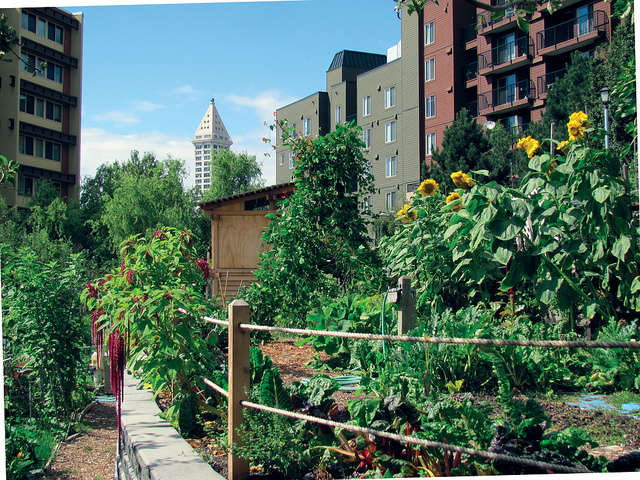The Basic Principles Of City Blooming
The Basic Principles Of City Blooming
Blog Article
Our City Blooming Diaries
Table of ContentsLittle Known Questions About City Blooming.Not known Factual Statements About City Blooming Some Of City BloomingThings about City BloomingThe Ultimate Guide To City Blooming
Intrigued in expanding food offer for sale in the City of Chicago? Believing about beginning a community garden? Modifications to the Chicago Zoning Statute permit agricultural usages like community yards and metropolitan farms in lots of components of the city. Below is a checklist of often asked concerns relating to the policies and policies that cultivators must consider when planning a city agriculture job.
The zoning modification does not customize any kind of various other codes dealing with composting, structure licenses, buying or renting City owned building, business licenses or environmental contamination. There are existing codes that regulate these issues and they continue to be completely result and might apply to your job. Community gardens are commonly possessed or handled by public entities, civic companies or community-based companies and kept by volunteers.
Urban ranches expand food that is intended to be sold, either on a not-for-profit or for-profit basis. Due to their industrial objective, metropolitan farms require a business license.
How City Blooming can Save You Time, Stress, and Money.
Composting is permitted yet only for plant material that is created and made use of on website. The amount of garden compost product can not exceed 25 cubic yards at any offered time according to the criteria in 7-28-715 of the City's Municipal Code. Yes. Because the soil at many brand-new yard sites needs changing, compost, soil, wood chips, or other materials can be acquired to construct or improve the growing space - sustainability.

If a building license is called for after that the hoophouse will certainly be taken into consideration an accessory building. You can discover more about the building permit needs by contacting the Division of Buildings. The 25,000-square-foot size restriction is planned to stop a single area yard from dominating a provided block or taking away from the block's existing residential or commercial personality.
The limitation does not use to gardens found in Public Open Room (POS) areas. Can there be more than one community yard that is 25,000 square feet on a solitary block? Fence is not needed, however, gardens that have big vehicle parking areas may be needed to mount fencing or various other landscaping features.
The smart Trick of City Blooming That Nobody is Discussing
B1 & B2 districts need that all industrial use activities be conducted inside your home. R districts limit commercial task. The laws reflect the purpose and intent of the Zoning Code. Is fence required for city ranches? Yes. Fences might be required, along with landscape design and testing, for particular parking lot and outdoor job or storage space areas depending upon area and the particular activity happening.
Urban farms need building licenses and zoning authorizations prior to building (fruit and vegtables). Other types of city evaluation might be needed depending on particular frameworks, activities, size, landscaping, licensing, public heath and stormwater administration problems.
The Department of Organization Matters and Consumer Protection can aid figure out the certain type of business license that's needed. Off street auto parking is needed for many commercial jobs in Chicago. The required number of car parking spaces is based on the number of workers functioning on site and not the square footage of the growing room.
The 7-Minute Rule for City Blooming

Yes. An urban ranch can offer compost product generated on website, however, the operation should comply with the policies in 7-28-715 of the Chicago Municipal Code. Yes. Aquaponic systems are enabled inside on urban farms in lots of zoning areas. Nevertheless, a zoning testimonial and structure authorization is called for in order to mount structures or systems and a company certificate is called for as described over.
Approximately five hives or swarms of honey might be kept as an accessory usage. However, beekeepers must sign up with the Illinois Division of Farming. To learn more concerning the suggested zoning modification you might call the Division of Real Estate and Economic Development, Bureau of Planning and Zoning at 312.744.8563.
Farming in cities and metropolitan locations An urban ranch in Chicago. Urban agriculture refers to numerous techniques of cultivating. https://allmyfaves.com/cityblooming?tab=City%20Blooming, processing, and dispersing food in metropolitan locations. The term also relates to the location activities of pet husbandry, tank farming, beekeeping, and horticulture in an urban context. Urban farming is distinguished from peri-urban agriculture, which occurs in country areas beside residential areas.
The smart Trick of City Blooming That Nobody is Discussing
, who seek to create social networks started on a shared values of nature and community holism. These networks can establish by way of formal institutional support, ending up being integrated right into local town planning as a "change community" activity for sustainable metropolitan growth.
The a lot more direct accessibility to fresh veggie, fruit, and meat products that might be know through urban agriculture can enhance food security and food safety while reducing food miles, resulting in reduced greenhouse gas emissions, thus adding to environment modification reduction. Some of the initial evidence of urban agriculture originates from Mesopotamia.
Report this page